 |
 |
 |
| |
Effectiveness of DAAs In HIV/HCV-coinfected Patients with Decompensated Cirrhosis
|
| |
| |
Reported by Jules Levin
CROI 2017 Feb 14-16 Seattle, WA
Juan Berenguer1, Lourdes Dominguez2, Angela Gil-Martin3, Carmen Quereda4, Teresa AldAmiz-Echevarria1, Ignacio Santos5, Pablo Ryan6, Gabriel Gaspar7, Inma Jarrin8, Juan GonzAlez-Garcia9
1Hospital General Universitario Gregorio Maranon, Madrid, Spain, 2Hospital Universitario 12 de Octubre, Madrid, Spain, 3Servicio Madrileno de Salud, Madrid, Spain, 4Hospital Ramon y Cajal, Madrid, Spain, 5Hospital Universitario de La Princesa, Madrid, Spain, 6Hospital Infanta Leonor, Madrid, Spain, 7Hospital
Universitario de Getafe, Getafe, Spain, 8Instituto de Salud Carlos III, Madrid, Spain, 9Hospital Universitario La Paz, Madrid, Spain
FUNDING: i) GILEAD Fellowship Programme (Spain) Ref. GLD15/00314-GeSIDA-8916, ii) Red de Investigacion en SIDA (AIDS Research Network) (RIS) Ref RD12/0017, iii) FibroScan® devices were available at the institutions by a donation from AbbVie Spain to GeSIDA/SEIMC
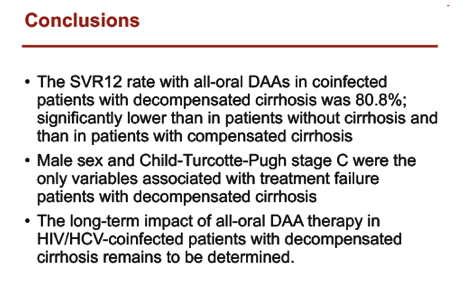
Abstract Body:
Clinical trials and real-life studies show high rates of success after all-oral therapy (Rx) with direct-acting antivirals (DAA) in HCV-monoinfected patients with decompensated cirrhosis (De-C). We assessed real-life outcomes of all-oral DAA Rx in HIV/HCV-coinfected patients with De-C.
MADRID-CoRe is a prospective registry of coinfected adults receiving all-oral DAA in hospitals of the Madrid Regional Health Service (SERMAS). De-C was defined as current/prior Child-Turcotte-Pugh (CTP) stage B or C or current/prior liver decompensation or hepatocellular carcinoma (HCC). The primary endpoint was sustained viral response at week 12 (SVR12). Between Nov. 2014 and Aug. 2016, 2662 coinfected individuals in MADRID-CoRe initiated DAA. Of the 1953 patients who were scheduled to finish treatment on May 31, 2016, severity of liver disease was as follows: no cirrhosis (No-C), 1066 (54.58%); compensated cirrhosis (Co-C), 736 (37.69%); De-C, 146 (7.48%); and unknown, 5 (0.26%).
The main characteristics of the 146 patients with De-C were male sex, (102, 69.86%), median age of 51.58 yr., cART (125, 85.62%), and Rx-naïve (88, 60.27%). One patient had had a liver-transplant (LT), 7 were on the LT waiting list, and 15 had HCC. CTP scores were as follows: A, 75 (51.37%); B, 62 (42.47%); and C, 9 (6.16%). The HCV genotypes were G1a (49, 33.56%), G1b (32, 21.92%), G4 (30, 20.55%), G3 (22, 15.07%), and other (13, 8.90%). The DAA regimens were SOF/LDV (73), SOF+DCV (36), SOF+SMV (26), SOF+RBV (7), PrOD (3), and SMV+DCV (1). RBV was used in 69 patients (47.26%). SVR12 was achieved by 118 patients with De-C (80.82%). This figure was significantly lower than SVR12 achieved by patients with Co-C (91.17%) (P<.001) and patients with No-C (93.53%) (P<.001). The differences between Co-C and No-C were not statistically significant. Of the De-C patients without SVR12, 17 (11.64%) relapsed, 5 (3.42%) died, 2 (1.37%), stopped Rx owing to AE, 1 (0.68%) had breakthrough infection, and 3 (2.05%) stopped for other reasons. The variables associated with SVR12 in the multivariate logistic regression analysis are shown in the table.
The SVR12 rate with all-oral DAAs in coinfected patients with De-C was 81%, ie, significantly lower than in patients with compensated liver disease. Male sex and CTP stage C were associated with treatment failure in De-C. The long-term impact of all-oral DAA Rx in HIV/HCV-coinfected patients with De-C remains to be determined.
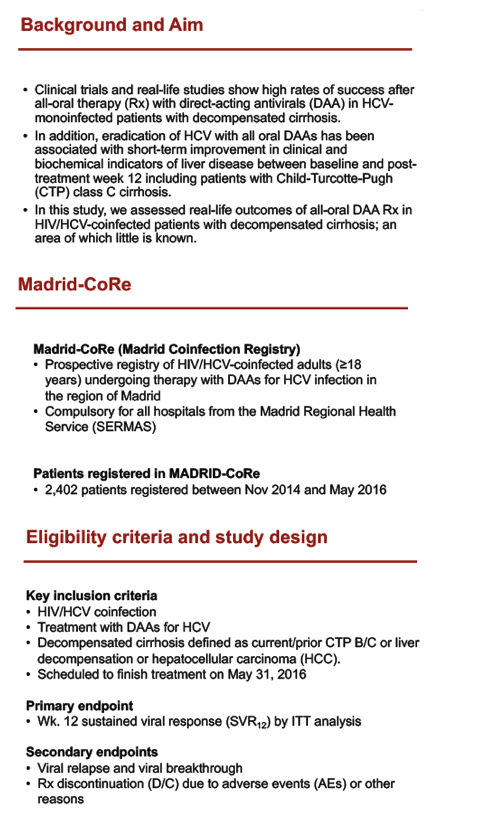
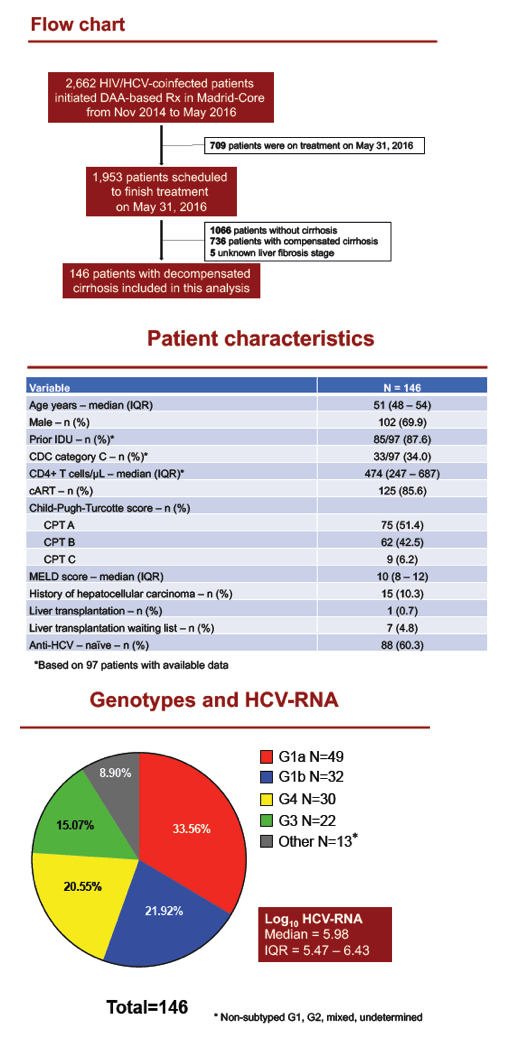
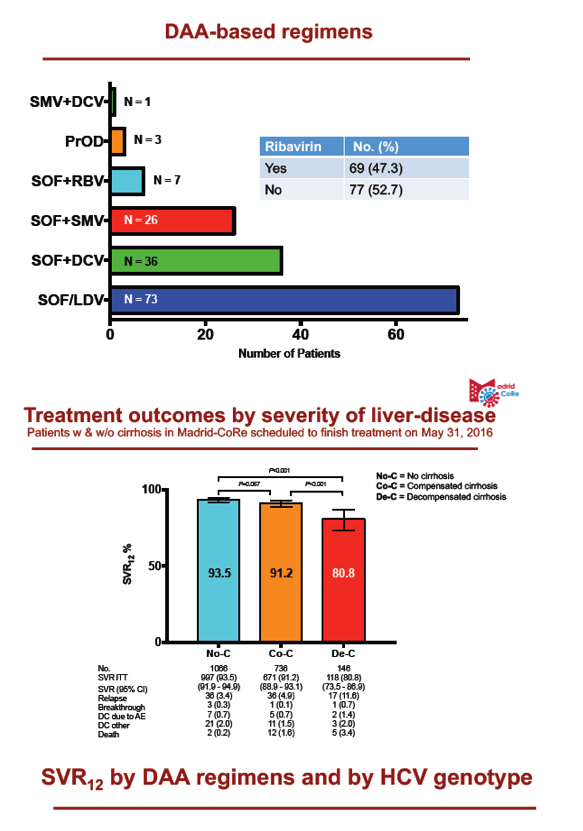
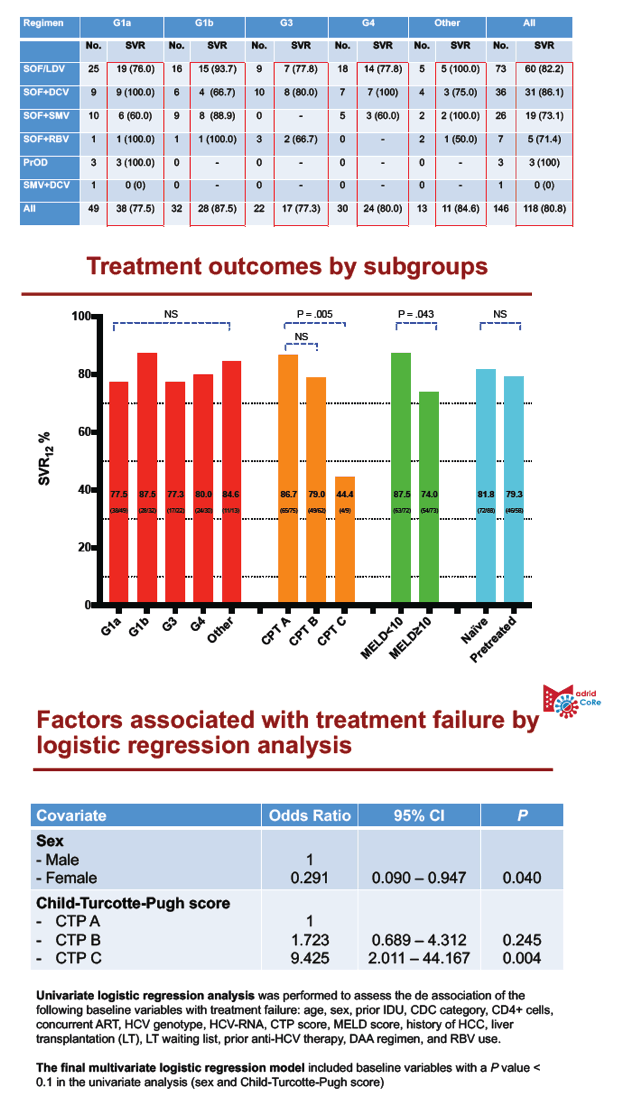
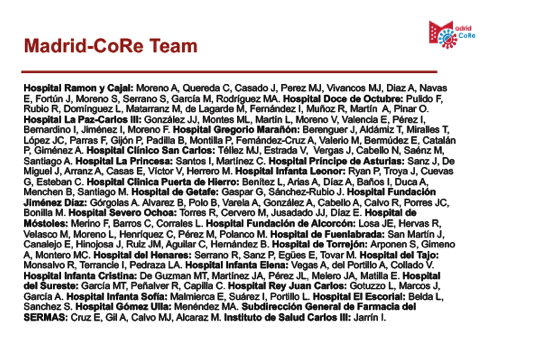
|
| |
|
 |
 |
|
|